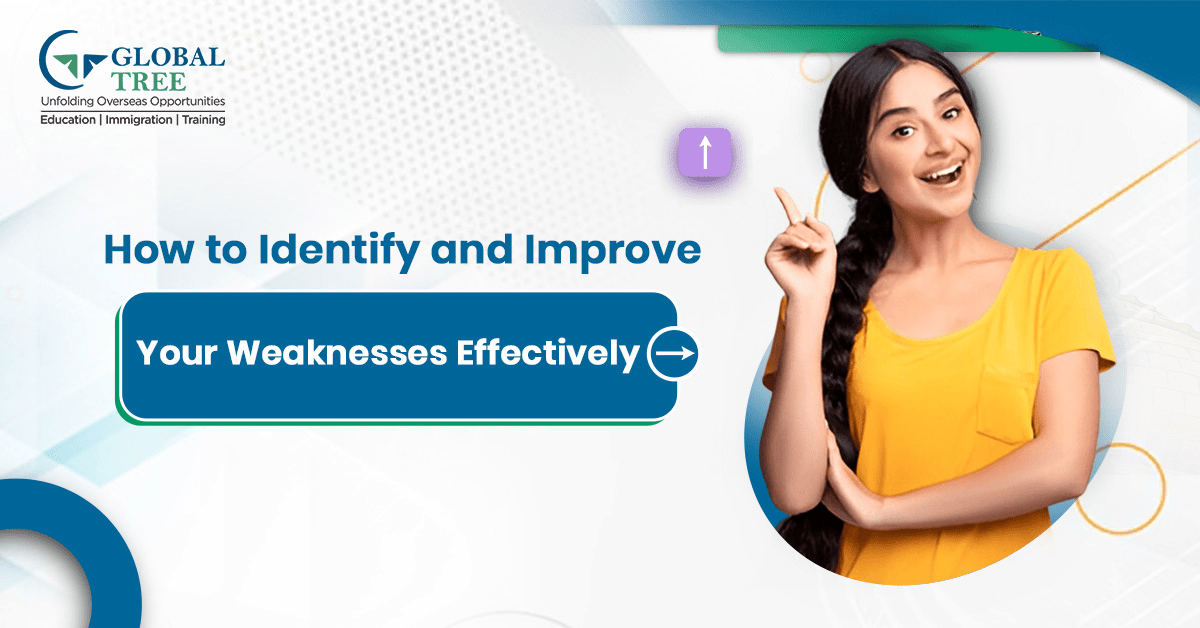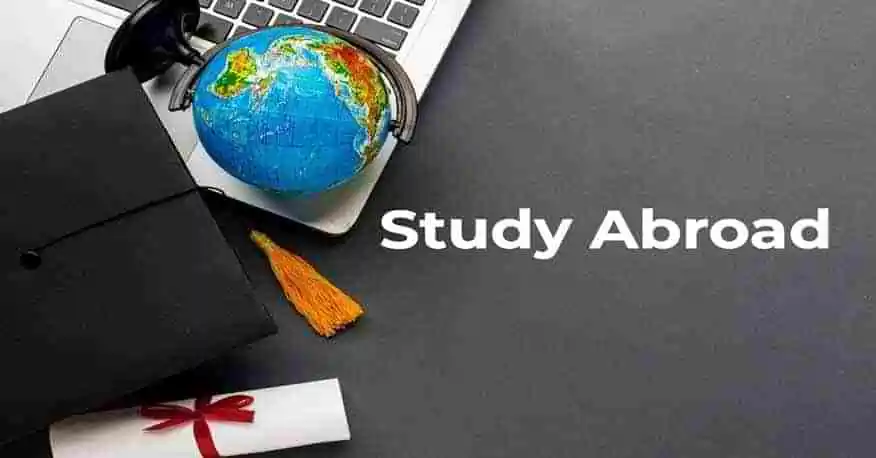How to identify and work on your strengths and weaknesses?

Introduction
Identifying and working on our weaknesses is crucial for personal and professional growth. However, it can be a challenging task to pinpoint exactly what our weaknesses are and how to address them effectively.
In this article, we will explore strategies and techniques to help you identify your strengths and weaknesses and provide valuable insights on how to work on them to become a stronger, more well-rounded personality. Whether seeking self-improvement or looking to excel in your career, understanding and addressing your weaknesses is a key step toward success.
Why does weakness occur?
Weaknesses are a natural part of being human. We all have things we're not as good at or areas where we struggle. The definition of weaknesses refers to those traits or skills that might not be fully developed or things that make us less effective in certain situations. On the flip side, strengths are what we excel at and help us thrive.
So why do weaknesses occur in the first place? Several reasons include personal limitations, lack of experience, or even environmental factors like stress or specific situations that can make us act less effectively.
Examples of personal weaknesses and strengths can paint a clearer picture. For example, a weakness could be "difficulty with time management," while a strength could be "strong communication skills." These traits are part of who we are, and understanding them helps us grow.
Everyone has examples of strengths and weaknesses of a person they know (or even themselves). A person's strength might be their ability to stay calm under pressure, while their weakness could be a tendency to avoid confrontation. It's all about knowing what you're good at and where to improve.
Recognizing and accepting your identified strengths and weaknesses is essential for personal growth. Once you look honestly at what you're good at and where you struggle, you can create a plan to use your strengths effectively while working on your weaknesses. It also helps in building confidence and improving performance.
So, how do you go about this? You can start by asking yourself, "How do I identify my strengths and weaknesses?" It's a reflective process. You might look back at past experiences, think about Feedback from others, or even take a personality test to get a clearer picture. Once you know your strengths, you can make the most of them. And as for weaknesses? Once you've identified them, you can improve them over time.
Weaknesses will occur because no one is perfect, and there are always areas in which we can improve. What matters most is embracing our strengths and weaknesses and striving to grow from them!
[Note: Weaknesses can also be turned into strengths with the power of positive thinking. Don't know how? Read this!)
Best ways to identify and work on weaknesses
Let's dive into how you can explore your strengths and weaknesses and use that knowledge to grow. Here's how you can take actionable steps:
1. Self-Reflection
One of the best ways to identify your weaknesses is through self-reflection. Think about times when you've faced challenges, felt less confident, or struggled with something. Are there any patterns or recurring themes in those situations? By reflecting on your actions and behaviors, you start pinpointing areas where you need improvement.
Ask yourself questions like:
- What am I good at? Take note of the things that come quickly to you.
- What have others complimented me about? Sometimes, Feedback from others highlights your strengths you might not even realize.
- What have others had to help me with on more than one occasion? This can reveal areas where you might struggle.
- Which projects and tasks drain my energy? These could be linked to your weaknesses or areas that need improvement.
- Which projects have I spent hours on without getting tired? These likely tap into your strengths.
(Know More: Why is career development important in today’s world?)
- What are my hobbies, and why do I like doing them? Your hobbies reflect your natural interests and abilities.
By using these ideas for strengths and weaknesses, you start to see where you excel and where you need work.
2. Seek Feedback
It can be challenging to see our weaknesses, but sometimes others can offer a valuable perspective. Seek Feedback from colleagues, friends, or family. They can highlight strengths you might not realize you have or point out areas for growth you might be overlooking.
When getting Feedback, remember: it's not about taking it personally. Feedback is an opportunity for growth. Embrace it as a chance to learn, even if it's tough to hear. Be open to the idea that others can see things you may not have noticed about yourself.
3. Conduct a SWOT Analysis
SWOT analysis is a fantastic tool for identifying your strengths and weaknesses. This process involves breaking down your internal factors—strengths and weaknesses—and external factors—opportunities and threats.
- List your strengths and weaknesses. What do you excel at, and where do you struggle?
- Analyze how these weaknesses might hinder your progress. Are they holding you back from achieving your goals?
- Consider potential opportunities that allow you to overcome weaknesses. For instance, there's an opportunity to learn a new skill to help you improve in an area of weakness.
This is a great way to look honestly at yourself and find areas to improve.
4. Prioritize and Set SMART Goals
Once you've identified your weaknesses, it's time to take action. Not all weaknesses need to be tackled at once. Prioritize your goals and categorise them into short-term and long-term goals. If something significantly affects your career or relationships, that should be at the top.
Then, create SMART goals to address them. SMART stands for:
- Specific: Clearly define what you want to improve.
- Measurable: Track your progress.
- Achievable: Make sure your goal is realistic.
- Relevant: Ensure your goal aligns with your broader objectives.
- Time-bound: Set a timeline for when you want to achieve it.
For example, if time management is a weakness, a SMART goal might be: "I will use a planner to schedule my tasks for the next month and stick to it to improve my time management skills."
5. Seek Knowledge and Acquire New Skills
A great way to overcome weakness is to develop your learning skills. If you know a gap in your knowledge, consider taking courses or attending workshops that can help. Whether online or in person, there are tons of resources to help you grow.
And don't forget about mentors. Seeking someone experienced in the area where you need improvement can be a great way to get guidance and advice on building your skills.
6. Take Risks and Embrace Discomfort
Sometimes, the best way to face your weaknesses is to embrace Discomfort. Real growth happens outside of your comfort zone. Don't shy away from situations that challenge you, even if they're initially uncomfortable.
For example, if public speaking is a weakness, seek opportunities to practice, even if you're nervous. The more you face your fears, the more confident you'll become.
By pushing yourself, you not only learn how to deal with your weaknesses, but you also build resilience.
[Discover More: A list of top Features of Successful and Effective teams!]
7. Focus on Your Strengths
Finally, while working on your weaknesses is essential, don't forget to focus on your strengths too. The more you lean into the things you're naturally good at, the more confident you'll become. This confidence can give you the energy and motivation to tackle those weaknesses.
When you know your strengths, you can use them as tools to support your development in areas where you're less confident.
You'll learn how to identify and turn your weaknesses into strengths using these steps. Personal growth is a continuous journey, but taking the proper steps can make you the best version of yourself!
8. Journaling
Journaling is a great way to identify and understand your weaknesses. By regularly writing about your positive and negative experiences, you can spot recurring patterns in your thoughts and actions. For example, if you often feel anxious in certain situations, journaling can help you pinpoint the cause, like feeling unprepared.
If you’re interested in improving your writing and reflective skills further, a journalism course abroad could provide valuable techniques to help express your thoughts more clearly. This reflection enables you to identify improvement areas and track progress over time. Ultimately, journaling gives you a clearer understanding of yourself and your growth journey.
9. Break Down Large Weaknesses
Sometimes, a weakness can feel overwhelming, especially when it's broad. For example, saying, "I need to improve my communication skills," can feel vague and hard to tackle. Instead of fixing the whole thing immediately, break it into smaller, more manageable components.
Let's take "communication skills" as an example:
- Active listening might mean focusing more on understanding the other person before responding, asking clarifying questions, or summarizing what was said.
- Giving constructive Feedback: You may struggle with delivering Feedback positively and productively. You can break this down further into practicing providing input gently, focusing on the behavior, and offering solutions rather than just pointing out problems.
Focusing on more minor aspects of a broad weakness allows you to progress quickly and feel less overwhelmed. This approach makes the whole process feel more achievable and less intimidating.
10. Track Your Progress
It's easy to get discouraged when improving weaknesses, especially if progress feels slow. That's where tracking your progress comes in. Keeping a record of your efforts helps you stay motivated and allows you to see how far you've come. You can search for apps online that will keep you organised and make your tasks easier.
You could track your progress in different ways:
- A journal: Write down your goals and how you work on them daily or weekly. You can reflect on what worked and what didn't and make adjustments.
- A spreadsheet or checklist: These can be great for more tangible goals, like completing tasks related to improving your weaknesses. For example, if you're working on active listening, you could create a checklist with things like "made eye contact," "didn’t interrupt," or "asked follow-up questions."
- Visual tracking: A progress chart, whether it's physical or digital, can be a fun way to see improvements over time.
(You may also like: Discover how journaling helps you grow in hard times.)
Tracking helps you stay focused and shows you the tangible results of your efforts. It's a huge confidence booster when you look back and realize how much you've grown.
Conclusion
First, acknowledge and accept your weaknesses to identify and work on them. Reflecting on your past experiences and soliciting feedback from others can provide valuable insights. Once you have identified your weaknesses, create a plan of action to address them.
This may involve setting specific goals, seeking additional training or mentorship, or allocating time and resources to improve. Personal growth and development is a lifelong journey, so be patient and persistent in overcoming your weaknesses and reaching your full potential.







